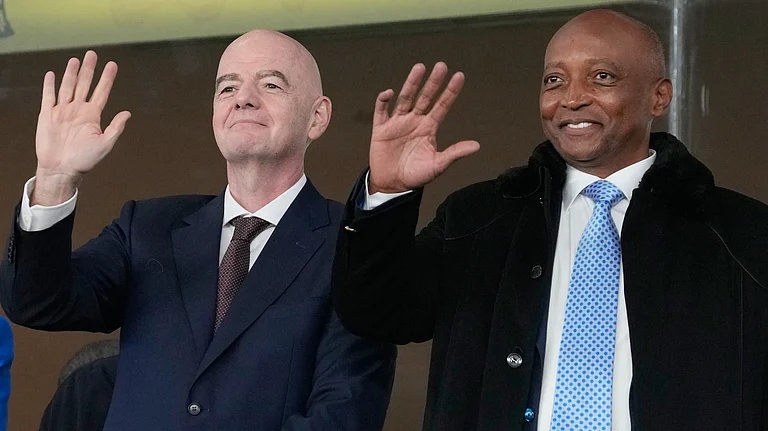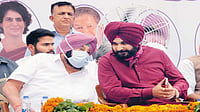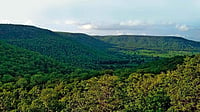India, said Dr. B.R. Ambedkar, is an “indestructible Union of destructible States”. It is on this principle that, in the over seven decades since countless provinces under British and princely control were integrated to form the Indian Union, several states were reorganised to form newer ones. The justifications, stated or tacit, for this constant jugglery of inter-state borders by successive governments have ranged from evolving greater cultural and linguistic cohesion within one geographical unit to ensuring equitable economic prosperity across bifurcated territories of a carved-up state.
The process of building greater harmony within the “indestructible Union” by slicing up the “destructible states” every few decades has often caused greater disharmony. “The recent interstate flare-up along the Assam-Mizoram border (six Assam police personnel were gunned down by their Mizoram counterparts) is a frightening reminder of the perils of allowing border disputes to fester…. Successive governments, while showing an urgency in carving up new states to serve various purposes, have shown varying degrees of inertia in addressing resultant disputes,” a former Union home secretary tells Outlook.
On July 27, responding to a question by BSP MP Haji Fazlur Rehman on pending interstate border disputes across the country, Nityanand Rai, the junior minister for home affairs, had informed the Lok Sabha that there are “boundary disputes arising out of demarcation of boundaries and claims and counter claims over territories between Haryana-Himachal Pradesh, UT of Ladakh-Himachal Pradesh, Maharashtra-Karnataka, Assam-Arunachal Pradesh, Assam-Nagaland, Assam-Meghalaya and Assam-Mizoram”. While the Centre recognises these seven as pending boundary disputes, there are others that flare up intermittently and have been awaiting redressal for some time.

The majority of interstate disputes are a leftover from the drastic changes made during the reorganising of states and demarcation of new boundaries during the last century. The States Reorganisation Act of 1956 had sub-divided India into 14 bulky states and six smaller Union territories. Over subsequent decades, various commissions paved the way for splitting up these provinces into smaller ones. The disputes Assam has with its neighbouring states are often seen as a direct corollary to it being sliced up to pave way for the creation of Nagaland (1963), Mizoram (1972), and Meghalaya (given status of an autonomous territory in 1970 and made a full-fledged state in 1972).
This is not to say that current border disputes are all legacy issues or were caused because successive governments went about splitting different states. After all, the bifurcation of Madhya Pradesh, Uttar Pradesh and Bihar to carve out Chhattisgarh, Uttarakhand and Jharkhand respectively, during Atal Behari Vajpayee’s NDA government in 2000 achieved the stated objective of peaceful co-existence of each of the two affected states. Several of the current boundary disputes are the result of competing political, social and economic aspirations of the parties that have ruled these states or even of the local population.
Some seven years back, a handful of locals from Ladakh set up temporary shops 13 km inside Himachal territory at the Sarchu border. As Sarchu is the gateway from Himachal into Ladakh on the picturesque Manali-Leh route, it emerged as a popular halt for both Indian and foreign tourists. Himachalis, particularly from Lahaul-Spiti—another popular high-altitude and arid tourist spot like Ladakh—began protesting that their economic interests were being hurt. Ram Lal Markanda, the MLA for Lahaul-Spiti, tells Outlook that things came to a head in 2019 when “traders from both sides began pelting stones at each other and the police had to intervene”. As the interstate boundary weren’t clearly demarcated at Sarchu, the Geological Survey of India (GSI) was asked to put it right. Himachal chief minister Jai Ram Thakur also sought direct intervention of Union home minister Amit Shah to resolve the stalemate. The issue has been gathering dust ever since.
A legacy border dispute for Himachal also lies in its Parwanoo town, parts of which have repeatedly been claimed by Haryana. While Himachal continues to try for a closure to its border disputes with Ladakh and Haryana, it also has an ongoing tussle with neighbouring Punjab and Haryana over sharing waters of the Satluj-Yamuna Link Canal.
Another curious case is that of Odisha. Last February, the state’s long-festering boundary dispute with Andhra Pradesh flared up when the latter conducted panchayat elections in three villages that actually fall in Odisha’s Kotia block of Koraput district. The Andhra government even went about renaming the villages, claiming these were part of Andhra’s Salur block. In a comical display of ‘too much democracy’, the voters in these villages, who were earlier wooed aggressively by political stakeholders in Odisha during the 2019 Lok Sabha polls, now found themselves being lured with equal gusto by leaders from Andhra. They repaid them with their votes.
“The Odisha government has shown a complete lack of concern. We can keep shouting till the cows come home but take it from me, the Kotia cluster of villages is as good as gone (to Andhra),” says former collector Gadadhar Parida, a native of Koraput district. Odisha also has pending disputes with West Bengal over 82 villages spread over the Bhograi and Jaleswar blocks of Balasore and with Jharkhand over the Jagannathpur village in Keonjhar district.
And then there is Karnataka. As the state fights off polarising water wars with neighbouring Tamil Nadu and Goa over sharing of waters of the Cauvery and Mahadayi rivers respectively, it must also confront boundary disputes with Maharashtra and Kerala. The southern state’s decades-old border row with Maharashtra has reared its head periodically. Last year, Maharashtra chief minister Uddhav Thackeray’s reference to ‘Karnataka-occupied Maharashtra’ with regard to Belgaum district caused uproar in Karnataka, with interstate buses blocked briefly.
The competing claims between the two states over Karnataka’s Belgaum district date back to the implementation of the States Reorganisation Act, 1956, which had led to the formation of Karnataka by merging regions of the then Mysore state, the Bombay and Madras presidencies and the principality of Hyderabad. The Act had transferred Belgaum district, minus Chandgad taluk, from the Bombay Presidency to the newly formed state. Ever since, Maharashtra has been repeatedly staking claim over Belgaum city. Besides Maharashtra, Karnataka has another unsettled dispute with Kerala over its claim to parts of the latter’s Kasaragod district.
These disputes are unresolved legacy issues dating back to those early years when the Indian Union was emerging out of its chrysalis. Other boundary crises have crept in over time, some due to poor planning in recasting of states and others due to an ever-changing socio-political and economic landscape. But, there’s one that may not qualify as an interstate border dispute just yet, but might just evolve into a major flashpoint and it is in the already troubled environs of Kashmir.
The Centre had showcased its move to bifurcate Jammu and Kashmir into Union Territories of J&K and Ladakh as one that would bring in unprecedented peace and development to the strife-torn region. Two years on, the controversial move is yet to bear the much-touted and intended fruits. However, the threat of another boundary dispute taking shape here has kept locals worried. Soon after the bifurcation, locals in Muslim-dominated Kargil, which had been clubbed with the Buddhist-dominated Leh to form the Union territory of Ladakh, demanded that their district be merged with J&K instead.
When Leh-based religious groups and political parties, including the BJP, formed the Peoples Movement for Ladakh, seeking inclusion under the Sixth Schedule for the Ladakh region, stakeholders in Kargil refused to be part of the exercise. Instead, the Kargil leaders announced the formation of Kargil Democratic Alliance and called for restoration of both Article 370 and the erstwhile state of Jammu and Kashmir. In recent weeks, the Kargil leaders have joined cause with the Peoples Movement for Ladakh in their demand for Ladakh’s statehood and guarantees under Article 371 of the Constitution. But locals fear that the absence of a quick resolution to this evolving crisis could once again reignite ‘Kargil-with-J&K’ demands.
(This appeared in the print edition as "Grounds Breaking Bad")
with inputs from Ajay Sukumaran, Ashwani Sharma, M.S. Shanker, Naseer Ganai and Sandeep Sahu

























